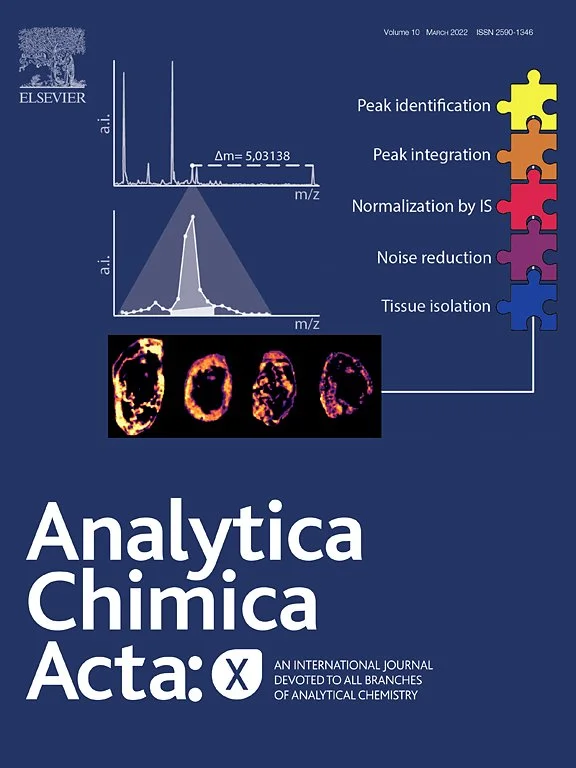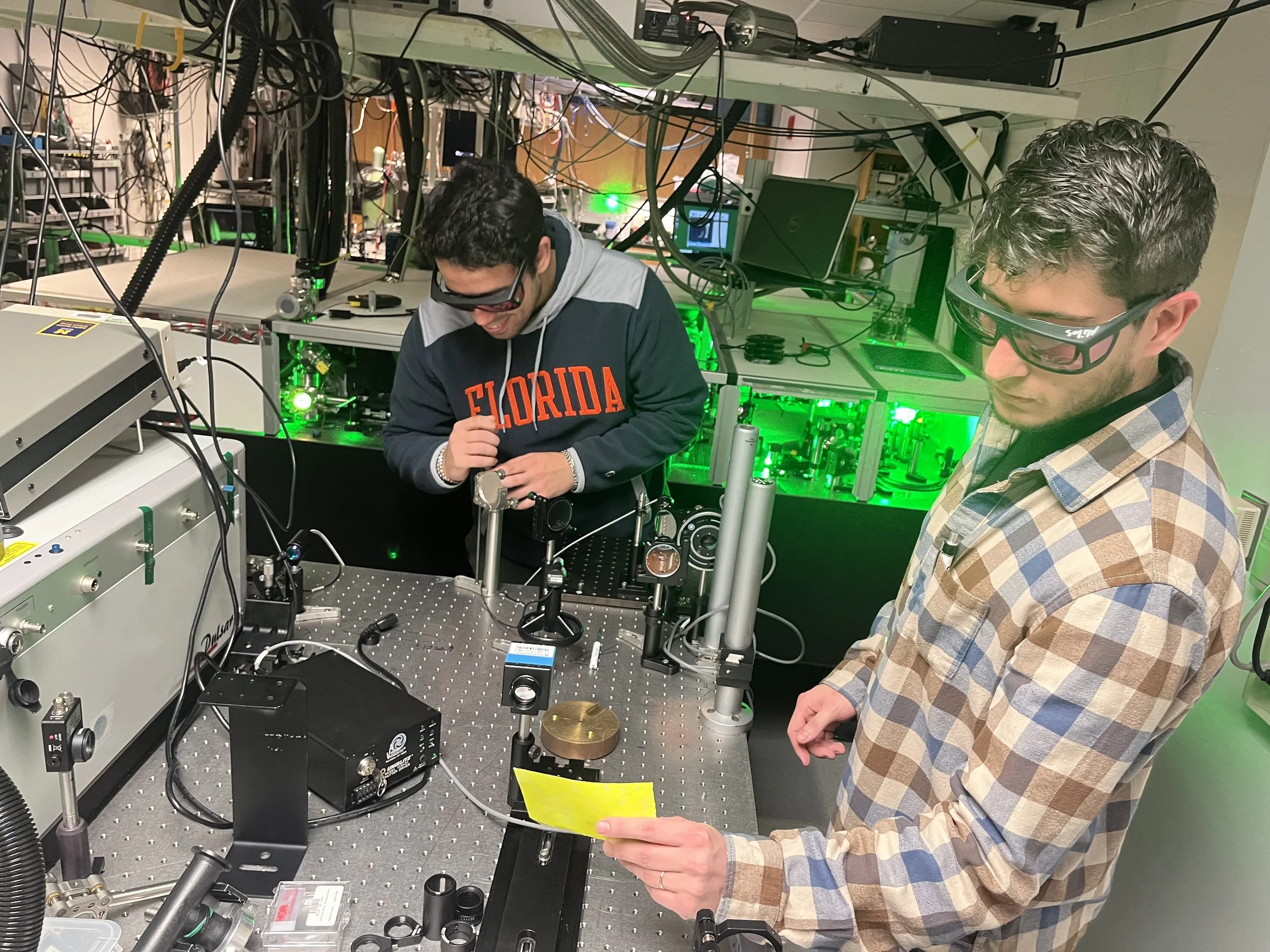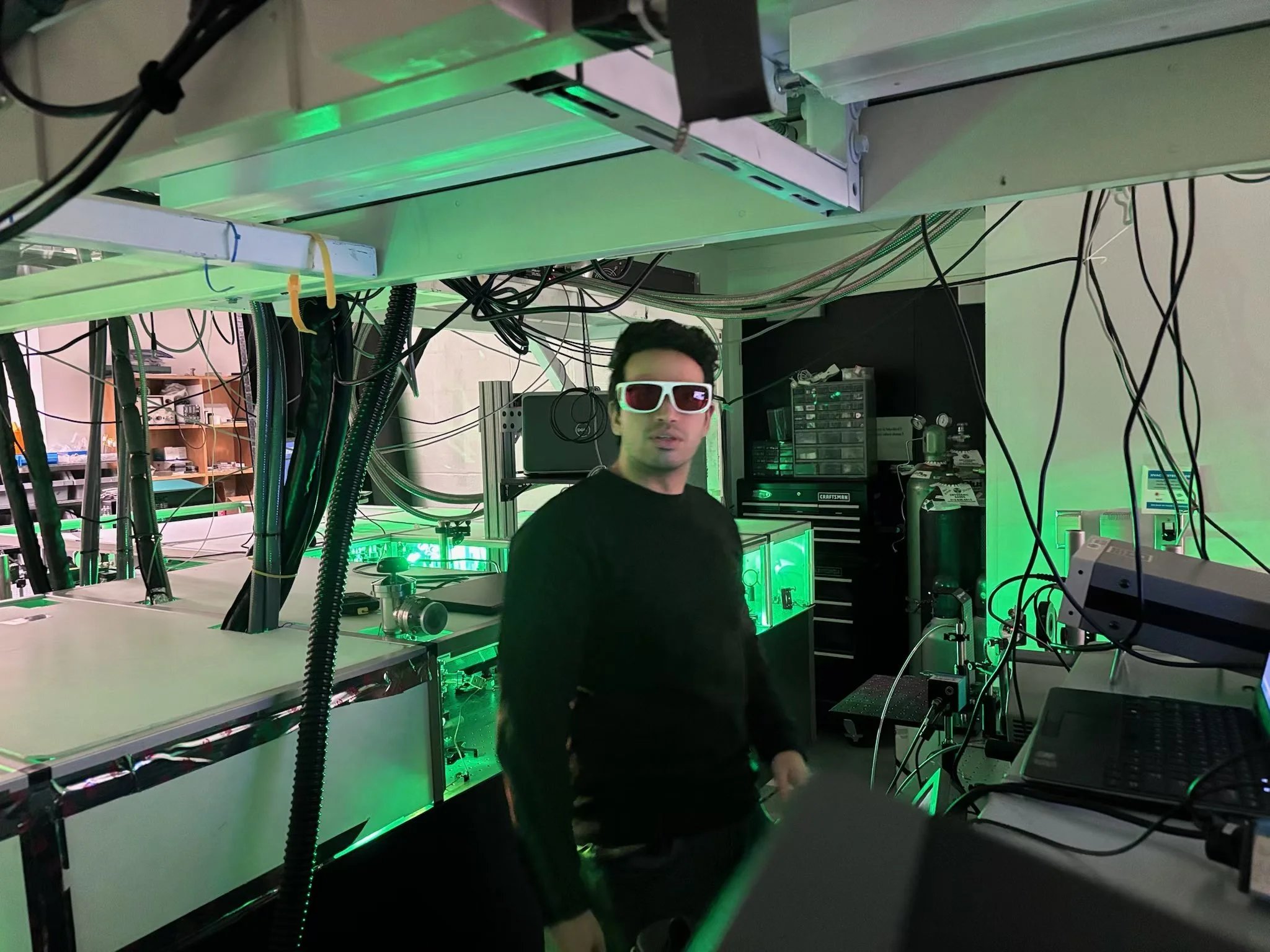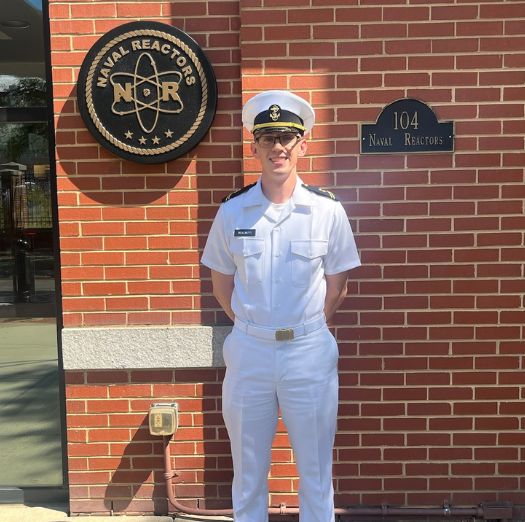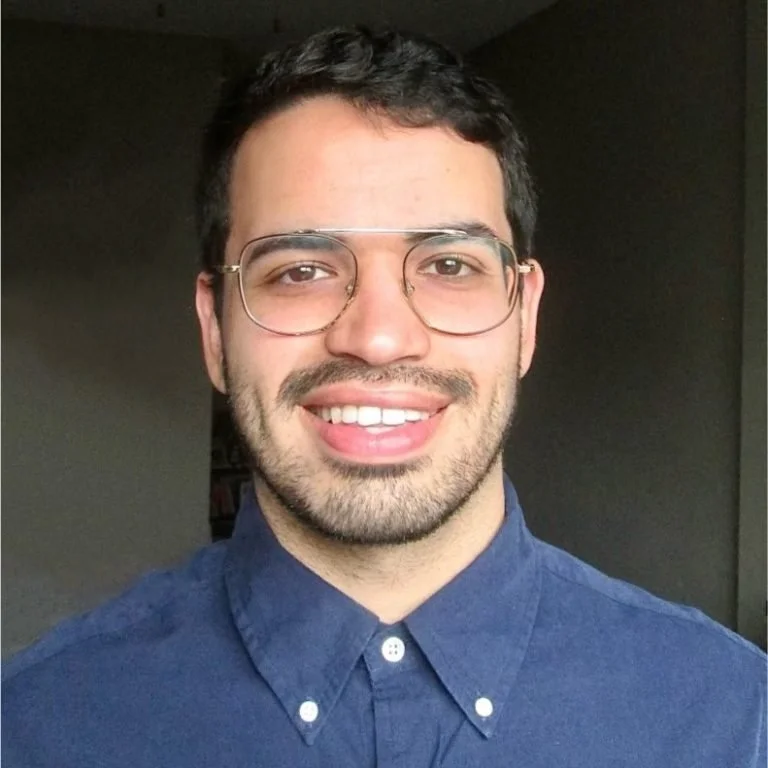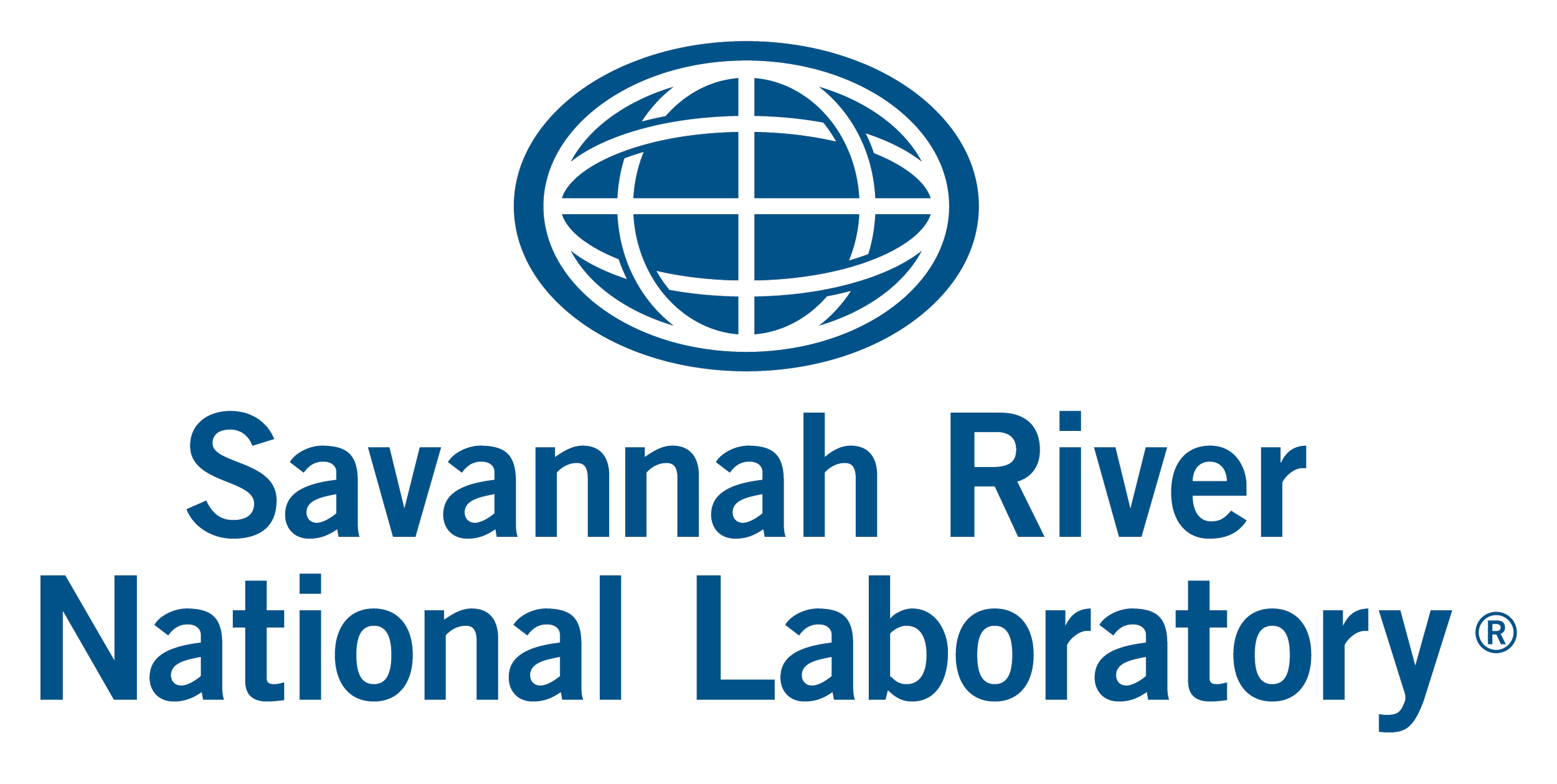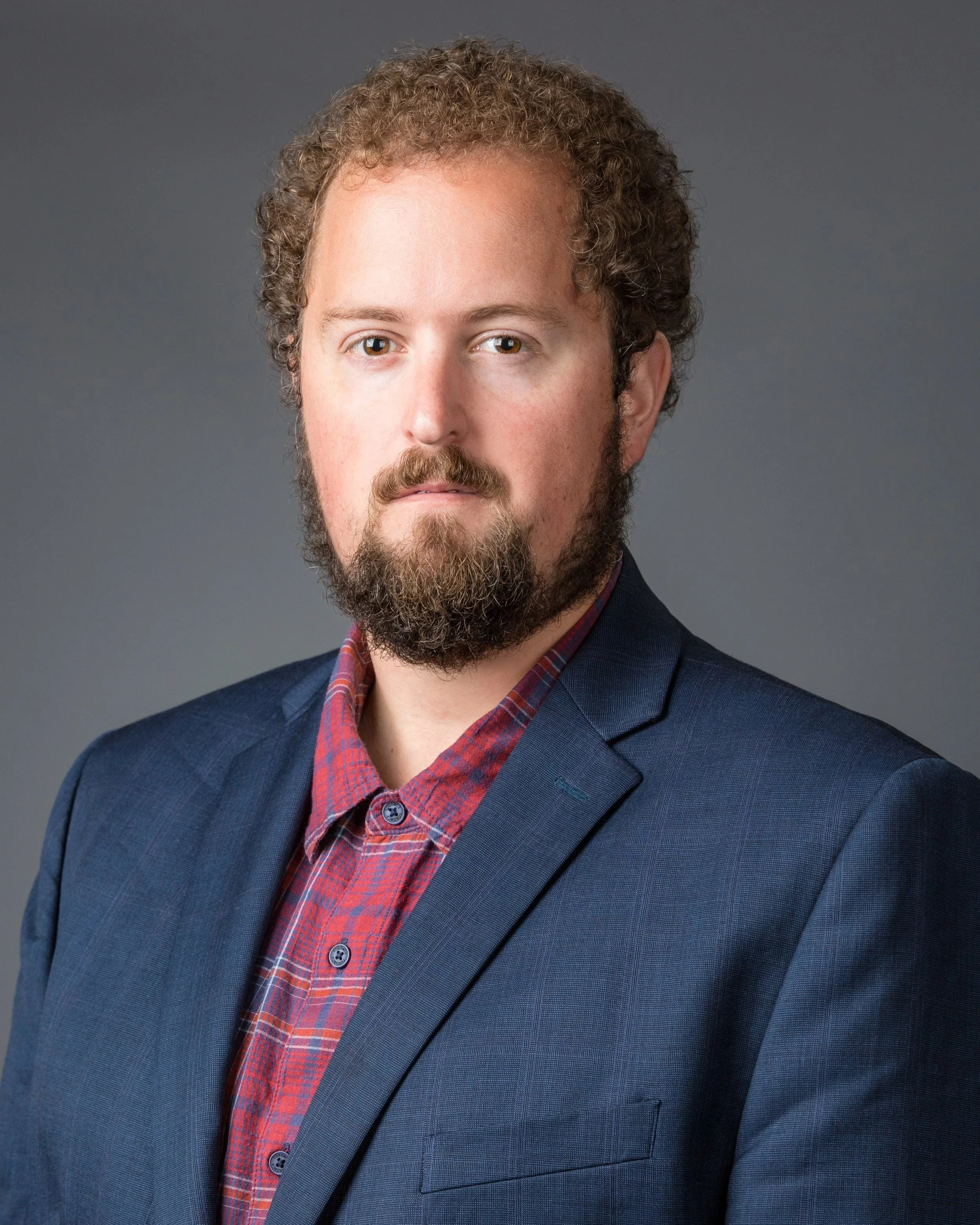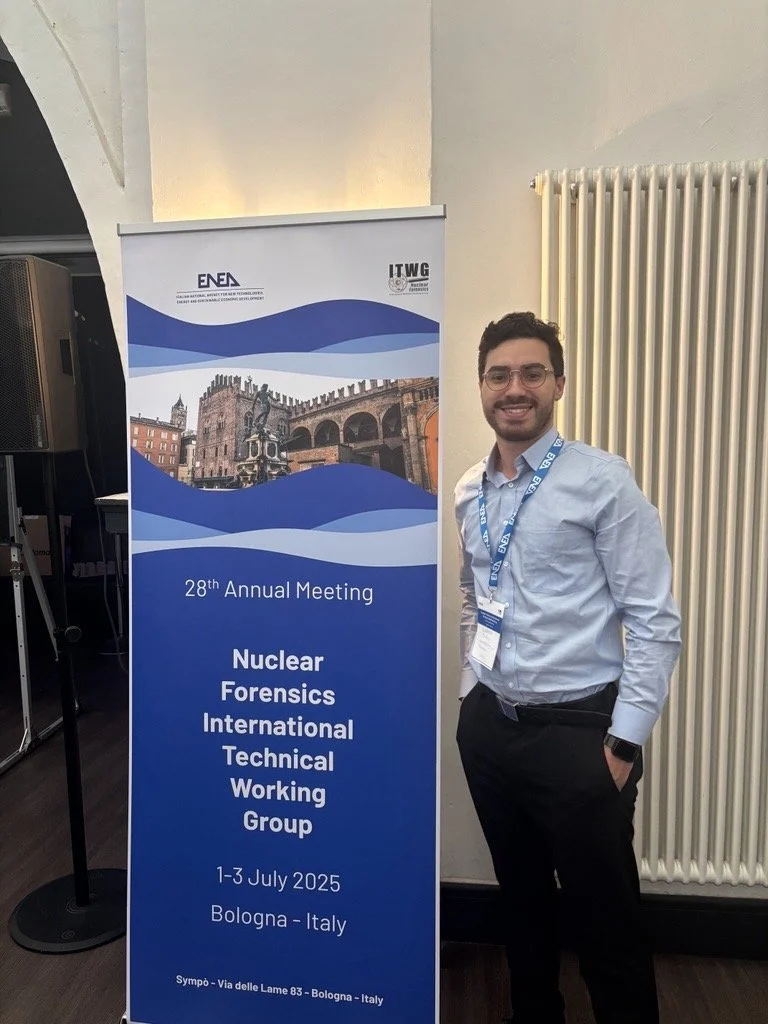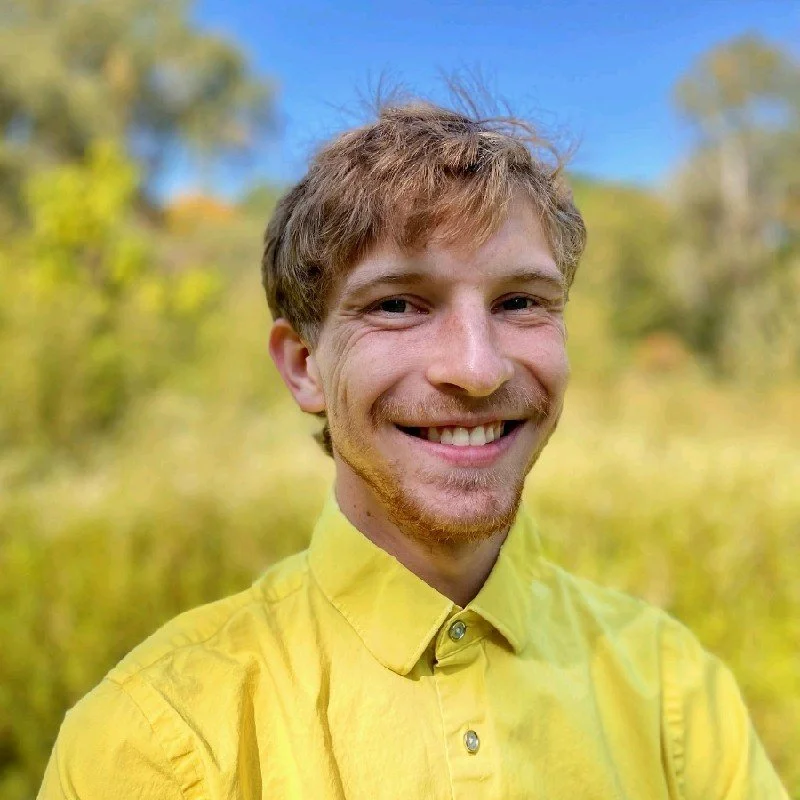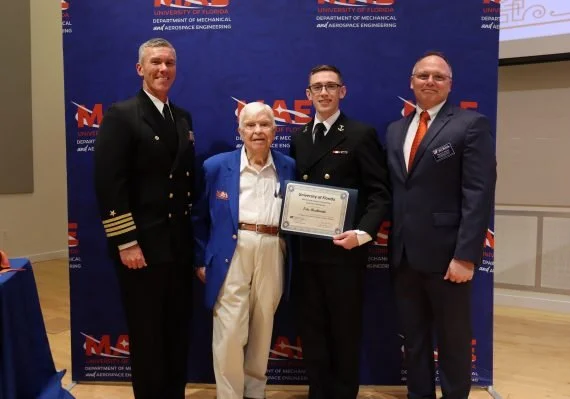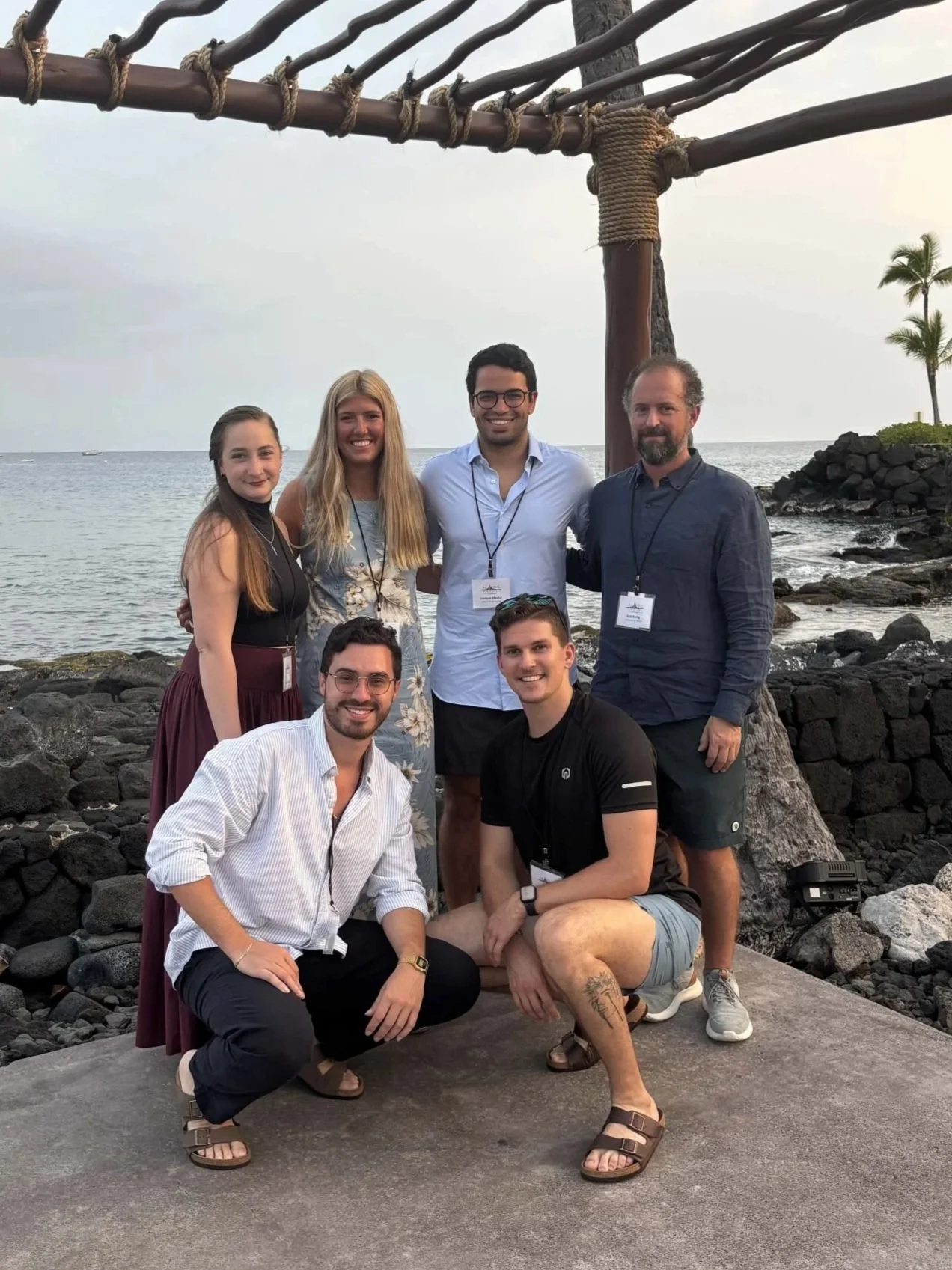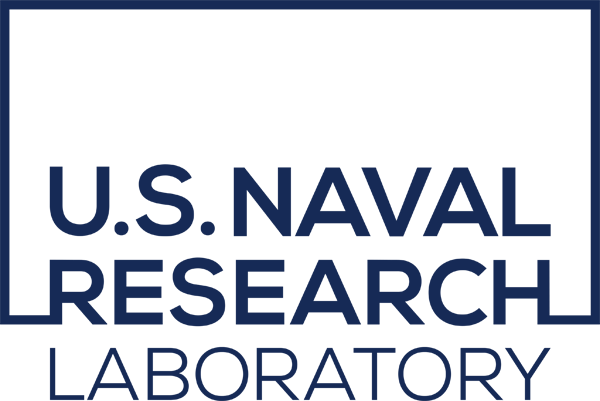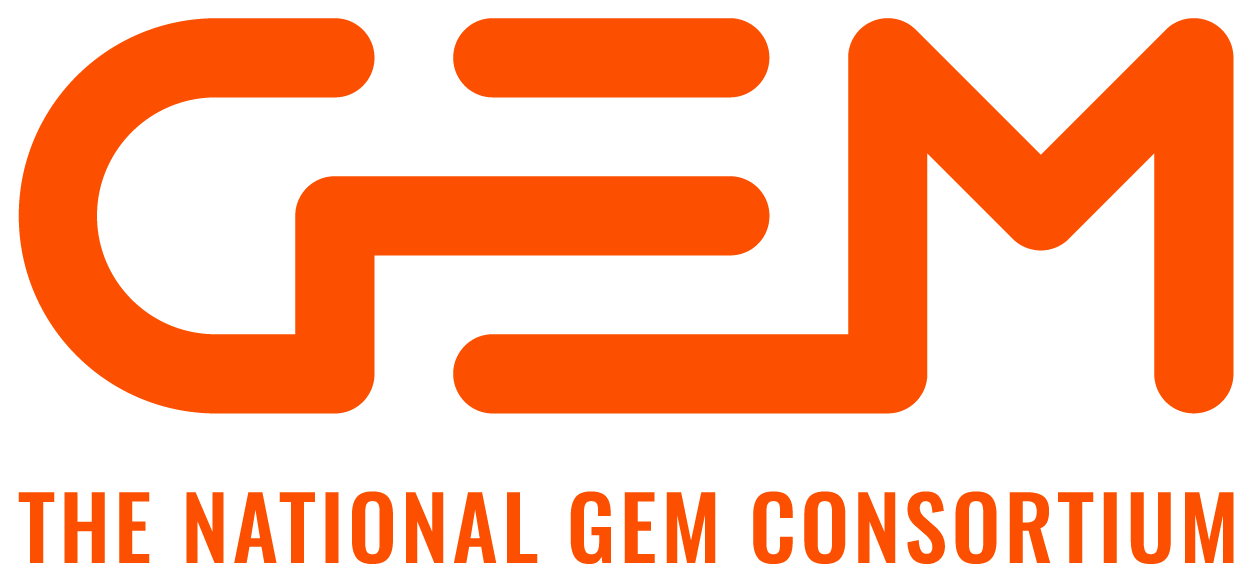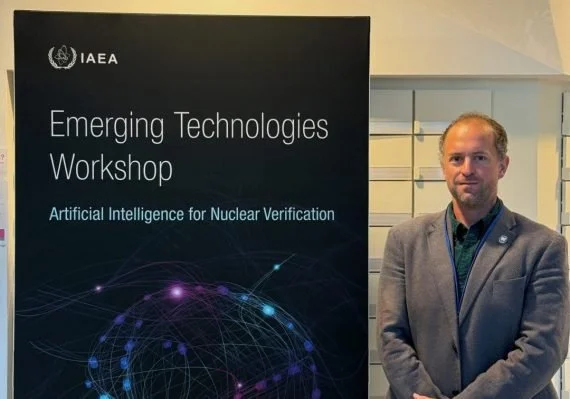2025
Weslee Kersey Publishes First Manuscript on Radiolytic Degradation of Plutonium Oxalates
November 2025: Nuclear engineering student Weslee Kersey has published his first peer-reviewed journal article through a close collaboration with scientists at Savannah River National Laboratory (SRNL). The paper, titled “Radiolytic Degradation of Plutonium-240 and Plutonium-242 Oxalates,” appears in a special issue of the Journal of Radioanalytical and Nuclear Chemistry focused on the Methods and Applications of Radioanalytical Chemistry (MARC XIII) conference.
Working side-by-side with SRNL researchers, Weslee helped design and interpret a series of experiments using Raman, infrared, and diffuse reflectance spectroscopy to track how different plutonium oxalate compounds slowly degrade under their own radiation and through interactions with the environment. The joint UF–SRNL team’s results help distinguish radiolytic effects from atmospheric oxidation and show how these processes ultimately lead to plutonium oxycarbonate and plutonium dioxide—information that is important for nuclear forensics and the safe, long-term storage of nuclear materials.
This publication marks a major milestone for Weslee and underscores the value of our group’s partnership with Savannah River National Laboratory in addressing challenging problems at the intersection of nuclear chemistry, materials science, and national security.
We will update this post with DOI links once the paper has appeared in the literature.
Hannah Patz Publishes First First-Author Manuscript on Advances in Autoradiography
November 2025. Hannah Patz recently published in the journal Nuclear Science and Engineering her first first-author manuscript, Advances in Autoradiography Systems for Nuclear Forensic Analysis, a comprehensive review of modern digital autoradiography technologies and their applications within the nuclear forensics discipline. The work synthesizes historical context, system design principles, and performance characteristics of imaging plates, gas-based detectors such as BeaQuant, and scintillation-based detectors including the iQID system. By comparing spatial resolution, dynamic range, particle discrimination capabilities, and practical considerations for sample analysis, the manuscript provides a rigorous framework for selecting and applying autoradiographic methods in nuclear forensic investigations.
This publication represents a significant milestone in Hannah’s scholarly development and contributes meaningfully to the broader scientific community. The review highlights emerging opportunities for integrating nondestructive autoradiographic techniques into nuclear forensic workflows and identifies research pathways for improving measurement fidelity, quantification methods, and real-time imaging capabilities. Her work strengthens the foundation for future studies aimed at enhancing attribution science and advancing next-generation analytical tools for nuclear security applications.
We will update this post with DOI links once the paper has appeared in the literature.
Hannah Patz Awarded Inaugural TRAINS Fellowship & Embarks on IAEA NKM Training
November 2025. We are delighted to announce that OSN graduate student Hannah Patz has been selected to receive the inaugural Training in Radiological and International Nuclear Security (TRAINS) Fellowship, a highly competitive international training program supported by the South Carolina Universities Research and Education Foundation (SCUREF). The TRAINS Fellowship supports graduate students from the United States and Europe in participating in specialized short courses and nuclear-security research facility tours.
In addition to this fellowship, Hannah will attend the IAEA Nuclear Knowledge Management (NKM) School hosted at Texas A&M University — a week-long intensive program focused on knowledge management in the nuclear sector.
For Hannah, this experience will sharpen her skills in an area that is increasingly important in the nuclear sector — not only mastering technical tools, but also understanding how knowledge flows within organizations, how culture influences security, and how to apply those lessons in her own research and future career.
Student Achievement: Justin Borrero Publishes Two Papers in November 2025, Including His First First-Author Publication
November 2025. We are excited to recognize Justin Borrero, a graduate researcher in our group, for an outstanding month of scholarly achievement. In November 2025, Justin published two peer-reviewed journal articles, marking an important milestone in his academic career — including his first first-author paper.
First First-Author Paper Published in Nuclear Science and Engineering
Justin’s first-author work, published in Nuclear Science and Engineering, represents a major step forward in his research trajectory. The paper highlights his original contributions to advancing nuclear-science methods and demonstrates his growing leadership as an emerging scholar in the field. This publication reflects both the depth of his technical work and the dedication he has shown throughout his graduate studies.
Second Paper Published in Analytica Chimica Acta
In the same month, Justin also co-authored a second paper appearing in Analytica Chimica Acta. This work showcases his interdisciplinary range, extending his expertise into high-precision measurement science and analytical chemistry. Contributing to a publication in such a respected journal underscores Justin’s ability to collaborate across scientific domains and bring nuclear-engineering perspectives to broader analytical challenges.
A Milestone Month for a Promising Researcher
Publishing two peer-reviewed papers within a single month — including a first-author manuscript — is a remarkable accomplishment for any graduate student. Justin’s productivity, technical rigor, and collaborative spirit continue to elevate our group’s research portfolio while reinforcing his strong potential as a future leader in the nuclear science community.
Please join us in congratulating Justin Borrero on these important achievements. We look forward to seeing his continued success and future contributions to the field.
We will update this post with DOI links once both papers have appeared in the literature.
Enrique Medici Awarded Inaugural TRAINS Fellowship and Participates in DTRA-Funded Experimental Campaign
November 2025. We are proud to highlight two major accomplishments by OSN graduate student Enrique Medici, who recently earned the inaugural TRAINS Fellowship supported by the Joint Research Centre (JRC) in Ispra, Italy, and separately participated in a week-long collaborative experimental campaign at the University of Michigan’s CUOS facility as part of our work in the DTRA Interaction of Ionizing Radiation with Matter (IIRM) University Research Alliance.
These two achievements—one focused on nuclear security education and the other on advanced radiation-materials experimentation—demonstrate Enrique’s versatility and growing impact across both policy-relevant and technical research domains.
Please join us in congratulating Enrique Medici on these outstanding achievements. We look forward to his continued contributions to our research group, our department, and the broader national-security and nuclear-science communities.
Midshipman Eric Realmuto Selected as U.S. Navy Naval Reactors Engineer
October 2025. Midshipman Eric Realmuto has successfully completed the highly competitive Naval Reactors Engineer interview process at Naval Reactors Headquarters. The selection involved two technical engineering interviews and a final interview with Admiral William Houston, Director of the Naval Nuclear Propulsion Program.
Eric is a second-class NROTC midshipman studying Mechanical Engineering at the University of Florida. He conducts research in Dr. Kyle C. Hartig’s OSN Group, focusing on laser remote sensing and plasmas for national security applications. His recent experience includes a summer internship in the Materials Science Division at Lawrence Livermore National Laboratory and an internship at the Undersea Warfighting Development Center, where he gained operational exposure to Unmanned Undersea Vehicles and their naval applications.
Upon graduation, Eric will commission as an Ensign and begin his career as a Naval Reactors Engineer. In this role, he will help oversee the Navy’s fleet of more than 80 nuclear-powered ships and submarines—performing engineering analyses that ensure propulsion plants are militarily effective, safe, reliable, and long-lived.
Congratulations to MIDN 2/C Eric Realmuto on this distinguished achievement!
Paige Anderson Receives Undergraduate Award in Applied Spectroscopy
October 2025: Paige Anderson, a recent graduate of the University of Florida, has been honored with the Undergraduate Award in Applied Spectroscopy from the Society for Applied Spectroscopy. This prestigious national award recognizes outstanding undergraduate research in the field of spectroscopy and is given to only a handful of students each year. Paige was nominated by Dr. Ashwin Rao for her exceptional contributions to the intersection of optical science, machine learning, and nuclear security.
As an undergraduate researcher in the Optical Science and Nonproliferation Lab led by Prof. Kyle Hartig, Paige applied advanced data science and machine learning methods to analyze complex spectroscopic data. Her work demonstrated the use of stacked ensemble and data fusion techniques to detect plutonium surrogate contamination from optical emission spectra with remarkable accuracy. These efforts have resulted in multiple peer-reviewed publications and conference presentations, highlighting her innovation and technical rigor.
Beyond her laboratory achievements, Paige has contributed to national security research through internships at the Air Force Research Laboratory and Oak Ridge National Laboratory. She is also an active member of the Florida Institute for National Security Talent Pipeline, where she explores how artificial intelligence can strengthen national defense capabilities.
Paige graduated in May 2025 with a Bachelor of Science in Computer Science and will continue her academic journey as a Master’s student in Nuclear Engineering at the University of Florida. Her recognition reflects both her exceptional promise and her dedication to advancing the field of applied spectroscopy.
Enrique Medici Publishes First First-Author Paper in Peer-Reviewed Journal
Enrique Medici, a Ph.D. candidate in Nuclear Engineering at the University of Florida, has published his first first-author paper in the Journal of Radioanalytical and Nuclear Chemistry titled “Machine learning for fundamental spectroscopic and thermodynamic data of actinides and lanthanides.” The paper, co-authored with collaborators from the Savannah River National Laboratory (SRNL), introduces a new machine-learning framework to predict Einstein A-coefficients, key parameters that describe atomic transition probabilities essential to optical spectroscopy and nuclear forensics applications .
In this work, Enrique developed and validated an Extreme Gradient Boosting (XGB) model capable of estimating transition probabilities for 36 elements, achieving an 86% prediction accuracy across test datasets. The model successfully bridges gaps in experimental and theoretical data for complex elements such as plutonium, neptunium, and gadolinium, enabling more reliable thermodynamic characterizations from optical spectra. Demonstrating the method’s practical value, Enrique applied it to derive plasma temperature profiles for plutonium laser-produced plasmas from prior SRNL experiments, confirming agreement with known thermal behavior below 20,000 K .
The study, supported by the DOE National Nuclear Security Administration’s Consortium for Nuclear Forensics (CNF) and SRNL’s Laboratory Directed Research and Development program, represents a significant step toward integrating artificial intelligence into nuclear spectroscopy. Enrique’s publication highlights his growing expertise at the intersection of data science, spectroscopy, and national security research, underscoring the University of Florida’s leadership in nuclear forensics innovation.
Dr. Kyle C. Hartig Highlights UF–SRNL Collaboration at 2025 Joint Appointee Workshop
Dr. Kyle Hartig, Assistant Professor of Nuclear Engineering and Principal Investigator of the Optical Science and Nonproliferation (OSN) Laboratory at the University of Florida, participated in the 2025 Savannah River National Laboratory (SRNL) Joint Appointee Workshop, where he delivered two invited presentations highlighting the growing collaboration between UF and SRNL in nuclear science and security.
In his first presentation, Dr. Hartig provided an overview of his group’s successes enabled through the SRNL Joint Appointment Program. He emphasized how this partnership played a pivotal role in UF’s selection as the lead institution for the Consortium for Nuclear Forensics (CNF)—a major Department of Energy National Nuclear Security Administration (DOE/NNSA) initiative advancing education, research, and innovation in nuclear forensics. The joint appointment framework has strengthened UF–SRNL collaborations by aligning laboratory capabilities with university research expertise, creating new opportunities for student training and joint proposal development.
Dr. Hartig’s second talk highlighted the Jointly Mentored Postdoctoral Program, featuring collaborative supervision between UF and SRNL researchers. He and Dr. Louis McNamara of SRNL jointly mentor Dr. Austin Dorris, an SRNL postdoctoral researcher investigating uranium hexafluoride (UF₆) hydrolysis using ultracold spectroscopy techniques. This innovative research seeks to improve the fundamental understanding of UF₆ reaction dynamics relevant to nuclear fuel cycle monitoring and safeguards applications.
Dr. Hartig’s participation in the workshop underscores the strength of the UF–SRNL partnership and its growing impact on workforce development, collaborative science, and the advancement of national nuclear security missions.
Enrique Medici Named One of Five Air Force SMART Scholars Gets Schooled on Nuclear at Air Force Facility
Enrique Medici, a Ph.D. candidate in Nuclear Engineering at the University of Florida, was recently selected as one of just five students nationwide awarded the prestigious U.S. Air Force SMART Scholarship. This merit-based program provides full tuition and fosters a pipeline of highly skilled scientists and engineers into defense and national security service.
As a SMART Scholar, Enrique will engage with the Air Force Technical Applications Center (AFTAC), the Department of Defense’s key organization for nuclear treaty monitoring and global nuclear surveillance. In late June 2025, he joined his fellow SMART Scholars on a mission visit to AFTAC’s facilities, where they gained behind-the-scenes exposure to the operational role of nuclear detection and treaty verification.
Enrique brings to this honor a strong background in computational modeling and experimental nuclear science. As part of the Optical Science & Nonproliferation group at UF under Prof. Kyle Hartig, he conducts research combining simulation and spectroscopy to address challenges in post-detonation nuclear forensics. His selection as a SMART Scholar underscores his promise as a next-generation researcher in nuclear security domains.
This award strengthens UF’s reputation for producing talent engaged at the interface of national defense and scientific innovation. We look forward to Enrique’s contributions to AFTAC, to the defense community, and to the broader field of nuclear measurement and forensics.
Justin Borrero Presents Research at International Technical Working Group Meeting on Nuclear Forensics
Justin Borrero, a Department of Defense SMART Fellow and Ph.D. candidate in Nuclear Engineering at the University of Florida, recently represented UF and the Consortium for Nuclear Forensics (CNF) at the 28th Meeting of the Nuclear Forensics International Technical Working Group (ITWG-28) in Bologna, Italy. The ITWG convenes leading scientists, policymakers, and technical experts from around the world to strengthen global cooperation and advance research in nuclear forensics and nuclear security.
Justin was invited to deliver a technical presentation on his doctoral research, which focuses on applying advanced analytical and machine learning methods to improve the characterization and attribution of nuclear materials. His work integrates high-resolution spectroscopy, data fusion, and isotopic modeling to enhance the precision and timeliness of forensic analyses—key capabilities for supporting international nuclear nonproliferation and response missions.
In addition to presenting his research, Justin also provided an overview of the Consortium for Nuclear Forensics (CNF), a U.S. Department of Energy National Nuclear Security Administration (DOE/NNSA)–funded collaboration uniting universities, national laboratories, and federal partners. The CNF’s mission is to advance nuclear forensics science while training the next generation of experts to meet evolving global security challenges.
Justin’s participation in ITWG-28 highlights both his leadership within the nuclear forensics community and the University of Florida’s strong role in fostering international engagement and technical innovation. His achievements as a DoD SMART Fellow underscore his commitment to national service through research excellence in nuclear security.
Cameron Advances Nuclear Measurement Science through Summer Internship at Los Alamos National Laboratory
This past summer, Cameron Wojtowicz, a graduate research assistant in the Optical Science and Nonproliferation Lab at the University of Florida, completed a prestigious internship at Los Alamos National Laboratory (LANL), contributing to high-resolution radiation detection for nuclear security and advanced reactor applications.
At LANL, Cameron supported the development and characterization of microcalorimeter-based gamma-ray and X-ray detectors, instruments that deliver exceptional energy resolution for nuclear material assay. His work centered on applying these capabilities to advanced reactor material control and accountability (MC&A) and to improving reactor operations through precision spectroscopic monitoring.
Cameron participated in novel experimental campaigns and led the development of new Monte Carlo models in Geant4 to simulate detector response, optimize measurement geometries, and accelerate design decisions. These physics-based models are helping researchers interpret complex spectra and guide next-generation instrument concepts for sensitive detection and quantification of nuclear materials.
Importantly, Cameron’s internship supports a DOE Nuclear Energy University Program (NEUP)–funded effort, a collaborative project between the University of Florida (UF) and Virginia Commonwealth University (VCU). His experimental work and Geant4 modeling directly advance the UF–VCU team’s objectives to integrate cutting-edge microcalorimeter measurements with reactor MC&A workflows and operational diagnostics.
Cameron’s experience at LANL highlights the productive convergence of experimental detection, computational physics, and national laboratory partnerships. He plans to continue this line of research, leveraging the skills and collaborations forged at LANL—and within the UF–VCU NEUP team—to drive innovation in nuclear measurement science, nonproliferation, and reactor safety.
Cameron Wojtowicz Selected for 2025 ETI Summer School on Advanced Reactor Design & Nonproliferation
Cameron Wojtowicz has been chosen as one of approximately 15 participants in the 2025 ETI Summer School on Advanced Reactor Design, Nonproliferation, and Fuel Cycle Monitoring. The program, hosted from August 4 to 8, 2025, at Georgia Tech (Atlanta, GA) and Oak Ridge National Laboratory, brings together U.S. citizens and lawful permanent residents from universities and national labs for an intensive, hands-on learning experience.
During the weeklong program, Cameron and the other participants engaged with cross-cutting technologies across core disciplines, including nuclear safeguards, novel reactor systems, radiation detection, and the application of machine learning to nonproliferation challenges. Lab demonstrations, collaborative group projects, and tours (including a visit to ORNL) complemented lectures on 3D printing, anomaly detection, and fuel cycle monitoring.
Cameron’s involvement in this competitive summer school underscores their growing commitment to nuclear security and advanced reactor research. By applying computational methods and experimental techniques learned during the program, Cameron aims to integrate these new skills into ongoing research projects at our lab. Participation in ETI offers invaluable exposure to cutting-edge tools and a broader network of mentors in the national security and nuclear engineering community.
This opportunity represents a pivotal step in Cameron’s development as a next-generation nuclear innovator. We look forward to seeing how they apply the insights and collaborations forged at the summer school into future research and engineering challenges.
April 29th, 2025 - Eric Realmuto Receives Prestigious Albritton Scholarship for ROTC Excellence
Brigadier General James P. Albritton (Ret.) returned to his alma mater on Thursday, May 24, 2025, to present the Brigadier General James P. and Edythe P. Albritton Scholarship to Optical Science and Nonproliferation (OSN) undergraduate group member Eric Realmuto during the Department of Mechanical & Aerospace Engineering’s annual awards ceremony. The scholarship—bestowed each year upon two Reserve Officers’ Training Corps (ROTC) cadets or midshipmen who excel academically in MAE—recognizes student–leaders who exemplify service, scholarship, and technical ingenuity.
Realmuto, a third-year Naval ROTC midshipman with a near-perfect GPA supports research activities in Dr. Kyle C. Hartig’s OSN Group focused on laser remote sensing and plasmas for national security applications. Accepting the award, he credited the UF MAE faculty and the NROTC staff for “cultivating an environment where discipline in the classroom translates directly to mission-focused engineering.”
Established in 2016 through a generous endowment from the Albrittons, the scholarship provides financial support to undergraduate MAE majors enrolled in any branch of UF’s ROTC programs. Recipients are selected on the basis of academic performance, leadership potential, and dedication to the ideals of the engineering profession and the U.S. military.
Congratulations to MIDN 3/C Eric Realmuto on this well-earned honor, and many thanks to Brigadier General and Mrs. Albritton for their continued investment in the next generation of engineering leaders.
April 12th, 2025 - Eric and Paige Selected for NSSC-LLNL Summer Program
We are proud to share that Paige Anderson and Eric Realmuto, two outstanding students in our research group, have been selected to participate in the 2025 Nuclear Science and Security Consortium (NSSC) Summer School hosted at Lawrence Livermore National Laboratory (LLNL).
The NSSC Summer School is a highly competitive program that brings together top students from across the country to engage in intensive coursework and hands-on research in nuclear science, national security, and nonproliferation. This year’s program will focus on cutting-edge topics in nuclear forensics, detection technologies, and global security challenges.
Paige and Eric have demonstrated exceptional commitment and creativity in their work at UF, and their selection reflects not only their individual achievements but also the growing national recognition of the high-impact research conducted by our group. During the summer school, they will have the opportunity to collaborate with leading scientists at LLNL, deepen their technical expertise, and contribute to projects of national importance.
Please join me in congratulating Paige and Eric on this well-deserved opportunity!
April 8th, 2025 - Precision, Passion, and Plutonium: UF Students Shine at MARC XIII
In the sunny embrace of Kailua-Kona, Hawaii, the Thirteenth International Conference on Methods and Applications of Radioanalytical Chemistry (MARC XIII) welcomed scientists from around the globe—and among them, a spirited group from the University of Florida (UF) Optical SCience and Nonproliferation Group, ready to make waves in nuclear science.
Led by their faculty mentor Prof. Kyle C. Hartig, the group arrived energized and excited, prepared to contribute seven presentations to the technical program. Their schedule was packed, spanning multiple tracks and showcasing the diverse research strengths of the team.
Each day of the conference saw a steady stream of contributions from the group. In sessions ranging from environmental radioactivity to nuclear forensics and analytical method development, their work sparked conversations and new collaborations. Each student brought a unique voice to the table:
W. Kersey presented “Drivers for Thermal and Radiolytic Degradation of Plutonium Oxalates”, shedding light on the degradation mechanisms critical to nuclear material stability and storage.
H. Patz showcased advancements in forensic imaging with the talk “Real-Time Particle Discrimination in Digital Autoradiography for Nuclear Forensics.”
J.I. Borrero Negrón delivered “Machine Learning-Enhanced Spectral Analysis of Pu Oxalate Surrogate,” demonstrating how AI is transforming spectral interpretation in complex nuclear systems.
E. Medici presented precise nuclear data in “Precise Characterization of Plutonium Transition Probabilities,” supporting enhanced modeling for safeguards and materials analysis.
P.E. Anderson led the development of new analytical approaches in “Implementation of Stacked Ensemble Machine Learning for Detection of Plutonium Contamination in Soil via LIBS.”
Dr. Hartig contributed two invited talks that reflected the group’s leadership in both technical innovation and education within the field of nuclear forensics:
Dr. K.C. Hartig presented “Advancing Nuclear Forensics Education and Research Through the Consortium for Nuclear Forensics,” highlighting collaborative efforts to build the next generation of experts through strategic research, interdisciplinary training, and national lab partnerships.
In a second impactful contribution, Dr. Hartig also delivered “Advancing Atom Trap Trace Analysis (ATTA) for Radioxenon Detection: Enhancing Nuclear Treaty Verification and Forensics,” showcasing cutting-edge developments in ATTA technology that promise greater sensitivity and selectivity for critical radionuclide detection in global security applications.
Outside of the presentations, the group took full advantage of the conference’s vibrant community and stunning locale. From the welcome luau to the Farewell Dinner under the stars by the ocean shore, they bonded with fellow researchers, absorbed career advice from DOE lab mentors and peers from other academic institutions, and found time to explore the island’s volcanoes, coastal trails, and beeches.
By the end of the week, the team left Kona not only with lei necklaces and beach photos, but also with deeper insight, renewed motivation, and perhaps a few invitations to collaborate on future projects. Their voices had added a strong and youthful current to the international tide of radioanalytical chemistry—and they’ll be back.
March 12th, 2025 - Enrique Medici Awarded Prestigious DoD SMART Fellowship
Enrique Medici, a senior in the Nuclear Engineering program and a member of our research group, has been awarded a highly competitive Department of Defense (DoD) Science, Mathematics, and Research for Transformation (SMART) Fellowship. As part of this honor, Enrique will receive full tuition support, a substantial stipend, and guaranteed summer internships at the Air Force Technical Applications Center (AFTAC)—his sponsoring institution—throughout his doctoral studies. Upon completion of his Ph.D., he will also transition to a full-time position at AFTAC.
This fellowship underscores Enrique’s exemplary academic achievements and research potential in the field of nuclear engineering and national security. By supporting his entire doctoral journey, the DoD SMART program opens the door for Enrique to gain valuable hands-on experience at the intersection of cutting-edge research and national security. His success also reflects the strong mentorship culture within Dr. Hartig’s group and highlights the University of Florida’s commitment to fostering the next generation of nuclear engineering and national security leaders.
February 19th, 2025 - Ava Compitiello Selected for Competitive Naval Research Laboratory Internship
Ava Compitiello, a freshman in the Nuclear Engineering program, has been selected for a highly competitive Summer 2025 internship at the Naval Research Laboratory (NRL). During her internship, she will work on research related to radiation-hardened materials, gaining valuable experience in materials designed to withstand extreme radiation environments.
As a first-year student, Ava’s selection demonstrates her strong academic potential and commitment to nuclear engineering. This opportunity will provide her with hands-on experience in materials science and defense applications, setting a solid foundation for her future studies and research.
Congratulations to Ava on this exciting opportunity! We look forward to seeing all that she will accomplish.
February 18th, 2025 - Eric Realmuto Selected for Competitive ROTC Internship at LLNL
Eric Realmuto, an undergraduate student in our research group, has been selected for a highly competitive ROTC internship at Lawrence Livermore National Laboratory (LLNL). During this internship, he will contribute to a project focused on additive manufacturing and nuclear nonproliferation, gaining hands-on experience in a critical national security domain.
Eric has been an active member of our research group, working on projects related to laser-matter interactions. This opportunity at LLNL will allow him to apply his skills in a cutting-edge research environment while supporting efforts to enhance nuclear security.
We look forward to seeing the impact of his work and the expertise he will bring back to our group. Congratulations, Eric!
February 14th, 2025 - Enrique Medici Awarded GEM Fellowship for Ph.D. and Johns Hopkins APL Internship
Enrique Medici, a senior undergraduate student in our research group, has been awarded the National GEM Fellowship to support his Ph.D. studies, which he will begin in Fall 2025 in our group. This prestigious fellowship will also provide him with the opportunity to intern at Johns Hopkins Applied Physics Laboratory (APL), where he will work in the Force Projection Group on Counter-WMD topics related to hypersonics and extreme environments.
Enrique has been an integral part of our research group, contributing to projects on high-temperature materials and computational simulations. His work at APL will further develop his expertise in hypersonic flight physics and extreme material behavior, areas critical to national security.
We are excited to see Enrique continue his research journey and bring new insights back to our group. Congratulations, Enrique!
February 11th, 2025 - Prof. Hartig Invited to IAEA
In January 2025, Prof. Kyle Hartig traveled to Vienna, Austria to attend the IAEA Emerging Technologies Workshop as an invited observer. Known for his expertise in nonproliferation policy, advanced detection techniques, and machine learning applications, Prof. Hartig was also serving as the Chair of the INMM Cyber and Emerging Technologies Committee, a role that positioned him at the forefront of discussions about the intersection of technology and nuclear security.
The workshop brought together a diverse group of experts—scientists, policymakers, and technical specialists—to explore how emerging technologies could enhance global nonproliferation efforts. Prof. Hartig found himself deeply engaged in sessions discussing the integration of AI into safeguards and detection systems, offering insights drawn from his research at the University of Florida and collaborative projects such as the NNSA MTV and CNF Consortia as well as the DTRA IIRM Alliance.
During breaks, he exchanged ideas with international colleagues, discussing challenges like balancing innovation with policy constraints and the ethical considerations of advanced technologies. For Prof. Hartig, the workshop wasn’t just a professional milestone—it was a unique opportunity to contribute to meaningful dialogue about the future of nuclear security and build lasting collaborations across the global community.



